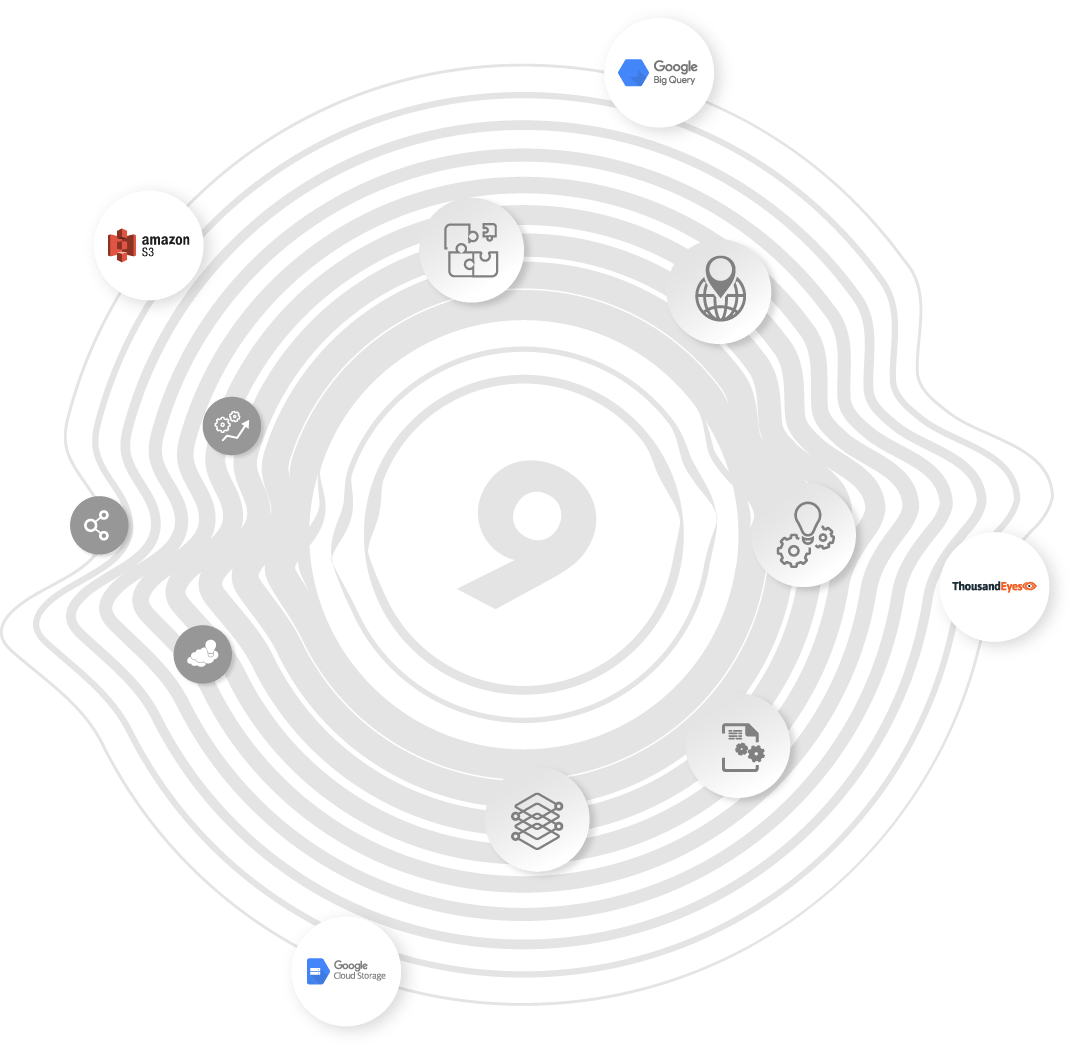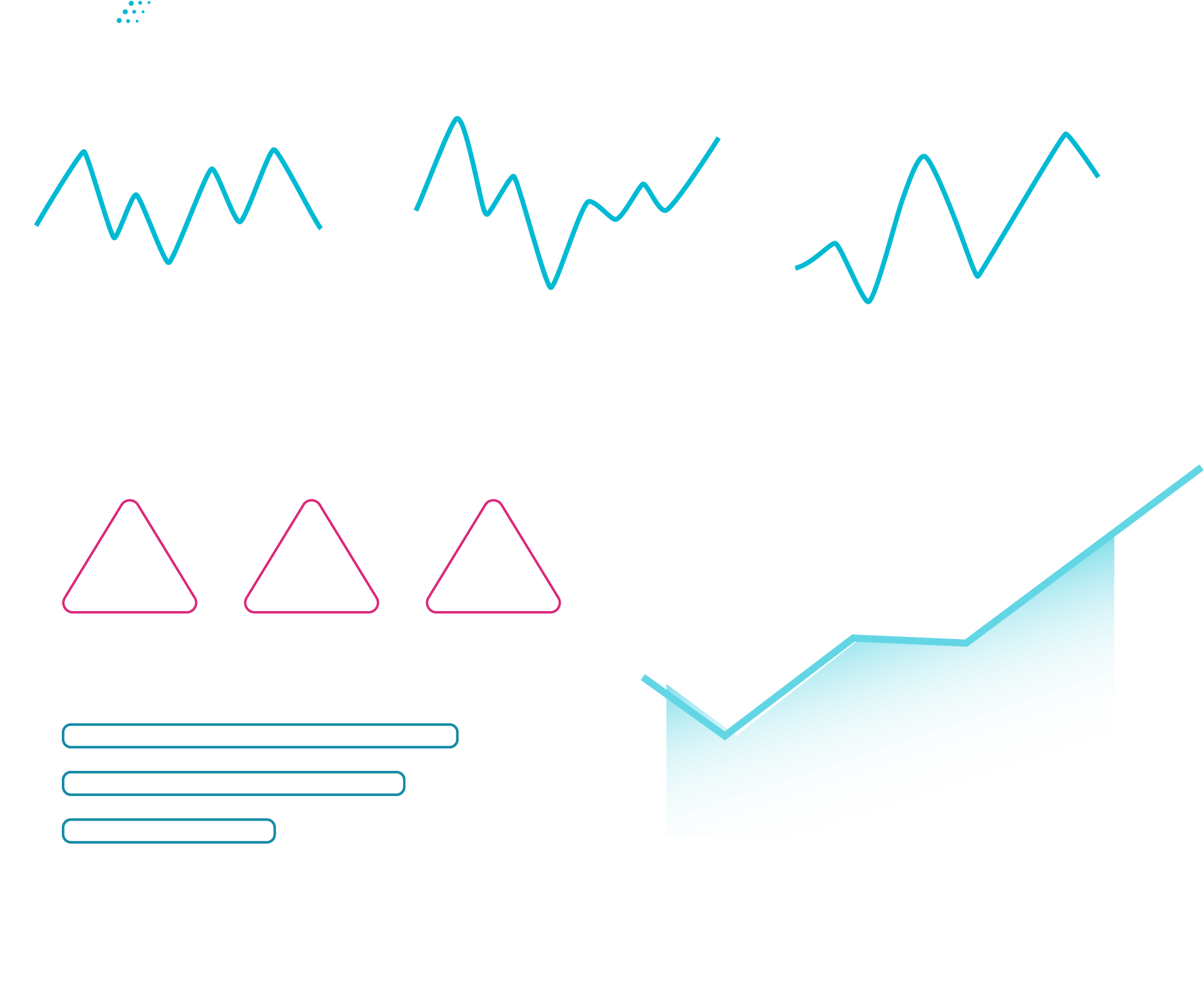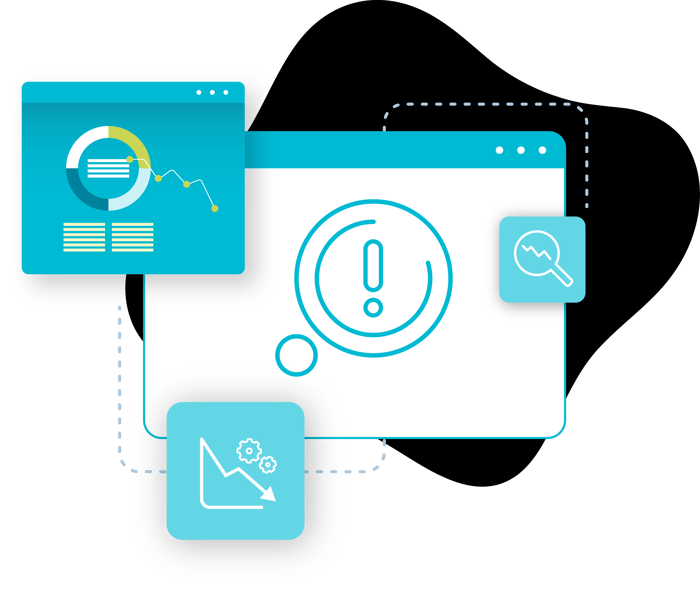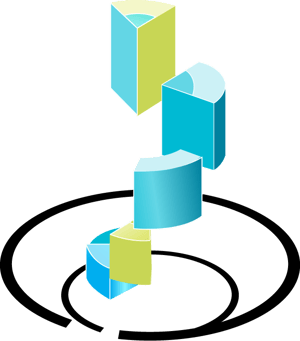How it works
Nobl9 is the only purpose-built platform for managing service level objectives (SLOs). Here, you'll learn how we ensure every reliability stakeholder gets the information and insights they need without the noise and chaos of traditional reliability management.
Why Nobl9 Exists
We’ve seen teams do everything right on paper.
They adopt SLOs, set thresholds, and wire up alerts. But they still end up back where they started. They are drowning in dashboards, chasing metrics, and trying to manage reliability through spreadsheets, scripts, and tools that were never designed for the job.

The problem isn’t the teams. It’s the systems they are using.
Nobl9 exists to fix that.![]()
It is the reliability platform for teams that want to run on SLOs, instead of another thing to track. We give you the structure, automation, and visibility to turn SLOs into a system that scales across teams, tools, and environments.
 You don’t need to start over.
You don’t need to start over. You don’t need to rip out your monitoring stack.
You don’t need to rip out your monitoring stack. You just need the system that makes SLOs actually work.
You just need the system that makes SLOs actually work.
Here's How it Works in Practice
Bring in your data
Nobl9 connects directly to the telemetry tools you already use, like Datadog, Prometheus, CloudWatch, New Relic, and many more. Instead of replacing them, we plug in. We pull only the data you care about, and then help you define the service level indicators (SLIs) that actually reflect user experience.
Define and launch your SLOs
Use our guided SLO Wizard, reusable templates, or SLOs-as-code to set performance targets based on customer expectations, business priorities, and risk tolerance. You can test new SLOs using backtesting and historical replay to make sure they’re meaningful before they go live.
Manage reliability at scale
With Nobl9, you can manage SLOs across teams, environments, and services from a single system. Set policy. Separate testing from production. Share templates across teams. Nobl9 gives you the governance layer that DIY systems and monitoring tools simply don’t have. We build each feature with a point of making sure you get the most accurate and relevant insights on service health.
Get alerts that reflect user impact
When you’re on-call, there’s nothing more disruptive than getting alerted for something that doesn’t matter. Nobl9 alerts on error budget burn rate and depletion, giving engineers early insight into reliability risks and silence the noise of traditional alerting. You can see what’s trending toward failure before it tips over and act with confidence during on-call or deploys.
See what matters and align the org
Reliability data is often stuck in dashboards that only engineers can interpret. Nobl9 gives every team whether it be SREs, product managers, or execs, a view tailored to their role, all based on the same shared SLO data. That means faster decisions, better planning, and fewer arguments about what’s actually broken.
Learn and improve over time
Since your software and your customer expectations are always in flux, SLOs aren’t made to be static. Nobl9 gives you the tools to iterate and evolve your SLOs by annotating important timeframes in performance and comparing changes and trends over time. Because everything is under a single pane of glass, you can adjust your targets easily with the evolution of your software development.
Grounded Reliability
For Each Part of the Business
If we’re talking about making reliability matter to the business, and vice versa, it only makes sense to acknowledge how reliability affects each part of the business. At the end of the day, this is what Nobl9 was built for: making reliability matter to each department through SLOs and the reports you base on them.
Program Owners (Reliability Leaders)
The Impact
Program owners go from manually wrangling SLOs across teams to leading a structured, measurable reliability program. They get broad adoption without losing control, and turn SLOs into an operational standard, not a side project.
Focus Areas
Implementing and scaling reliability practices across teams, ensuring consistency and alignment with organizational goals.
Before Nobl9
- SLO efforts are inconsistent and fragmented.
- Teams define and track SLOs however they want — if they do it at all.
- There's no system of record, no shared strategy, and no visibility into what’s working.
- Rolling out SLOs across the org feels like an uphill battle, with no scalable way to onboard or support teams.
With Nobl9
- SLOs are created and managed in a centralized, policy-driven way.
- The SLO Wizard and SLI Analyzer help teams start with guardrails — not guesswork.
- Program owners use Replay to backfill historical data and validate SLOs before go-live.
- Nobl9 provides a complete view of reliability performance, error budget usage, and adoption across teams.
- They can define standard templates, enforce best practices, and track org-wide alignment with minimal friction.
Key Features
- SLO Backtesting Enables validation of SLOs against historical data, ensuring thresholds are realistic and achievable.
- SLO Replay Assists in populating SLOs with historical data, facilitating smoother onboarding and analysis.
- SLO Annotations Provides context to SLOs by allowing notes on incidents or changes, enhancing transparency and learning.
- Composite SLOs Helps in understanding the interplay between different services and their collective impact on user experience.
- Data Export Supports sharing of reliability data across the organization for broader insights and accountability.
- Data Source Agnostic Ensures compatibility with various monitoring tools, promoting flexibility and ease of integration.
- SLO Organization and Scaling Allows for the management of multiple environments (e.g., sandbox vs. production), supporting testing and controlled rollouts.
SREs & Operators (Execution & Incident Response)
Before Nobl9
- Alerts fire constantly, but they don’t always mean something is broken for users.
- Teams spend more time filtering false positives than resolving real incidents.
- It’s difficult to track how user journeys behave across services or correlate metrics across tools.
- Reliability work is reactive, frustrating, and disconnected from business priorities.
The Impact
SREs move from firefighting to precision response. They focus on the right issues, resolve them faster, and operate with clarity instead of chaos. Nobl9 gives them the tools and data to manage reliability like a product, not a pager rotation.
Focus Areas
Day-to-day reliability engineering, incident response, and maintaining system performance.
With Nobl9
- SLO-driven alerting only notifies when customer experience is at risk, cutting noise dramatically.
- Multi-window, multi-burn rate alerts follow SRE best practices and reduce false positives.
- The Alert Center makes it easy to understand what’s firing, why, and how to respond.
- SREs can use composite SLOs to track entire user journeys, not just isolated components.
- During an incident, SREs get clear context, error budget visibility, and faster root cause analysis.
Key Features
- Error Budget Alerting Provides actionable alerts based on error budgets, reducing noise and focusing on user-impacting issues.
- SLOs as Code Integrates SLO management into existing CI/CD pipelines, promoting automation and consistency.
- SLO Replay Aids in analyzing past performance and understanding the impact of changes over time.
- SLO Backtesting Allows for the testing of SLO configurations before deployment, minimizing risks.
- Query Delay Ensures data accuracy by accounting for delays in telemetry, preventing false positives.
- SLO Annotations Enhances incident response by providing context directly within SLOs.
- Data Source Agnostic Offers flexibility in monitoring by supporting various data sources.
- SLO Organization and Scaling Facilitates testing in isolated environments, ensuring stability before production deployment.
- Composite SLOs Provides a holistic perspective on user experience by aggregating multiple SLOs, aiding in understanding overall service health.
Executives (Business and Technical Leaders)
Before Nobl9
- Reliability data is buried in technical reports or disconnected tooling.
- It’s difficult to answer basic questions like:
- How reliable are we?
- Where are we investing in reliability?
- What’s the customer impact of these incidents?
- Decision-making is based on incident counts and uptime, not business outcomes or user experience.
With Nobl9
- Executive rollup reports provide high-level views of service health across teams, apps, and regions.
- Reliability metrics are tied to cost, customer impact, and strategic risk.
- Nobl9’s compliance and audit reporting helps track change history, error budget trends, and program progress.
- Executives get clear, consistent KPIs that connect reliability efforts to the bottom line.
The Impact
Leaders stop relying on anecdotes and use real reliability intelligence to inform roadmap trade-offs, resource allocation, and strategic planning. Reliability becomes part of business performance instead of a footnote in a postmortem.
Focus Areas
Strategic oversight, risk management, and aligning reliability with business objectives.
Key Features
- Executive Dashboard Offers a high-level view of service reliability, enabling informed decision-making and strategic planning.
- Composite SLOs Provides a holistic perspective on user experience by aggregating multiple SLOs, aiding in understanding overall service health.
- Data Export Facilitates integration with business intelligence tools for comprehensive reporting and analysis.
- Budget Adjustments Allows for accurate reflection of service performance by accounting for planned downtimes or maintenance periods.

You’ve probably heard that service level objectives (SLOs) are a great tool to manage reliability.
Maybe you’ve even tried them.
But chances are, if you're here, it didn’t work the way you hoped.
You’re not alone.
- Are they connected to how you plan reliability work?
- Do they reflect what users actually care about?
- Are they trusted across teams?
- Can you report on them to product leadership or execs?
- Are they consistent and evolving with your business?
If not, lots of teams end up with SLOs that don't make much of a difference.
But they can do much more...

SLOs: The Foundation
of Strategic Reliability
Service level objectives (SLOs) change the way teams approach reliability. Instead of reacting to incidents or chasing abstract performance metrics, SLOs give you a way to define reliability from the perspective of your users and your business. At their core, SLOs are benchmarks for how a service should perform over a specific period of time.

SLOs help teams set clear goals grounded in user experience, cost trade-offs, and business priorities. With them in place, teams stop asking, “Is the system up?” and start asking, “Is it performing well enough to meet expectations?” That shift enables better planning, fewer fire drills, and smarter decisions about when to ship, when to stabilize, and when to invest.
You may have heard about SLOs, and you may even agree they’re essential to managing complex digital systems. But, the truth is that many SLO initiatives fail. Just implementing SLOs across your stack won’t guarantee results.
Without structure, SLOs fall into the same trap as raw observability data. They become isolated, inconsistent, and disconnected from how teams actually work. Most organizations struggle to define SLOs in a standardized way, share them across teams, or keep them aligned as business needs or customer expectations evolve.
These challenges are compounded when teams use different tools and rely on fragmented data sources. And if SLOs aren’t built into the development lifecycle—if they’re not embedded in how code is written and shipped—they lose relevance quickly.
SLOs are the foundation for strategic reliability, but they risk becoming just another disconnected dashboard without the right system in place. So, doing SLOs isn’t enough.
However, doing SLOs the right way can turn reliability from a reactive cost center into a strategic advantage, one that aligns engineering, operations, product, and planning around a shared definition of success.
The Result
A Fully Operational
Strategic Reliability Program
 SREs
SREs
know what to fix and when it matters.
 Program Owners
Program Owners
standardize and scale with confidence.
 Executives
Executives
get visibility that drives better business decisions.
The Business Impact of Strategic Reliability
Reliability is often treated as a technical problem. A question of uptime, infrastructure, or incident response. But when it’s managed the right way, it becomes something else entirely: a business advantage. When reliability becomes ingrained in core business objectives, you stop placing so much stock in metrics like uptime, availability, or Mean Time To Resolution (MTTR). With SLOs, you begin measuring the metrics that most accurately represent the most essential aspect of your business: your customers.
We’ve seen it firsthand.
Teams that start using SLOs to define and manage reliability quickly move from reacting to incidents to planning with intent. They spend less time firefighting and more time building. They stop guessing about what matters to customers and start measuring it directly.
The results are real:

This is what happens when reliability is tied to actual business priorities, with a structure in place to support it. We’re the system that turns reliability into a measurable, manageable, and competitive part of your business.

Adding a few SLOs to your dashboard won't accomplish the goal.
You'll see a difference by building a reliability strategy that scales.
without Nobl9
-
 Reactive Incident Management
Reactive Incident Management -
 Decentralized SLO and creation / management of SLOs is not policy driven
Decentralized SLO and creation / management of SLOs is not policy driven -
 Alerts don’t correspond to customer pain
Alerts don’t correspond to customer pain -
 Customer pain isn’t captured in an incident, or isn’t discovered in traditional monitoring tools
Customer pain isn’t captured in an incident, or isn’t discovered in traditional monitoring tools -
 Prioritizing wrong tech debt, or unprioritized engineering output that doesn’t align with immediate customer concerns or business initiatives
Prioritizing wrong tech debt, or unprioritized engineering output that doesn’t align with immediate customer concerns or business initiatives
with Nobl9
-
 Centralized policy driven SLO management. Easy to create and iterate, and enables entire user journey visibility
Centralized policy driven SLO management. Easy to create and iterate, and enables entire user journey visibility -
 SLOs fully integrate into the development lifecycle. SLOs are coded into dev and performance and purpose is thought through before ever releasing
SLOs fully integrate into the development lifecycle. SLOs are coded into dev and performance and purpose is thought through before ever releasing -
 Alerts are relevant, actionable, customizable, and correspond to customer pain. Big opportunity cost savings
Alerts are relevant, actionable, customizable, and correspond to customer pain. Big opportunity cost savings -
 Incidents get resolved faster with less finger pointing due to error budgeting views, and comprehensive visibility over the user journey
Incidents get resolved faster with less finger pointing due to error budgeting views, and comprehensive visibility over the user journey -
 Executive level reporting built from the same data that technical folks use ensures that execs know what is happening with their reliability without explaining or finger pointing from the teams that report on it
Executive level reporting built from the same data that technical folks use ensures that execs know what is happening with their reliability without explaining or finger pointing from the teams that report on it





.png)




.png?width=1200&height=628&name=Building%20Reliable%20E-commerce%20Experiences%20(42).png)
.png?width=1200&height=628&name=Building%20Reliable%20E-commerce%20Experiences%20(34).png)





